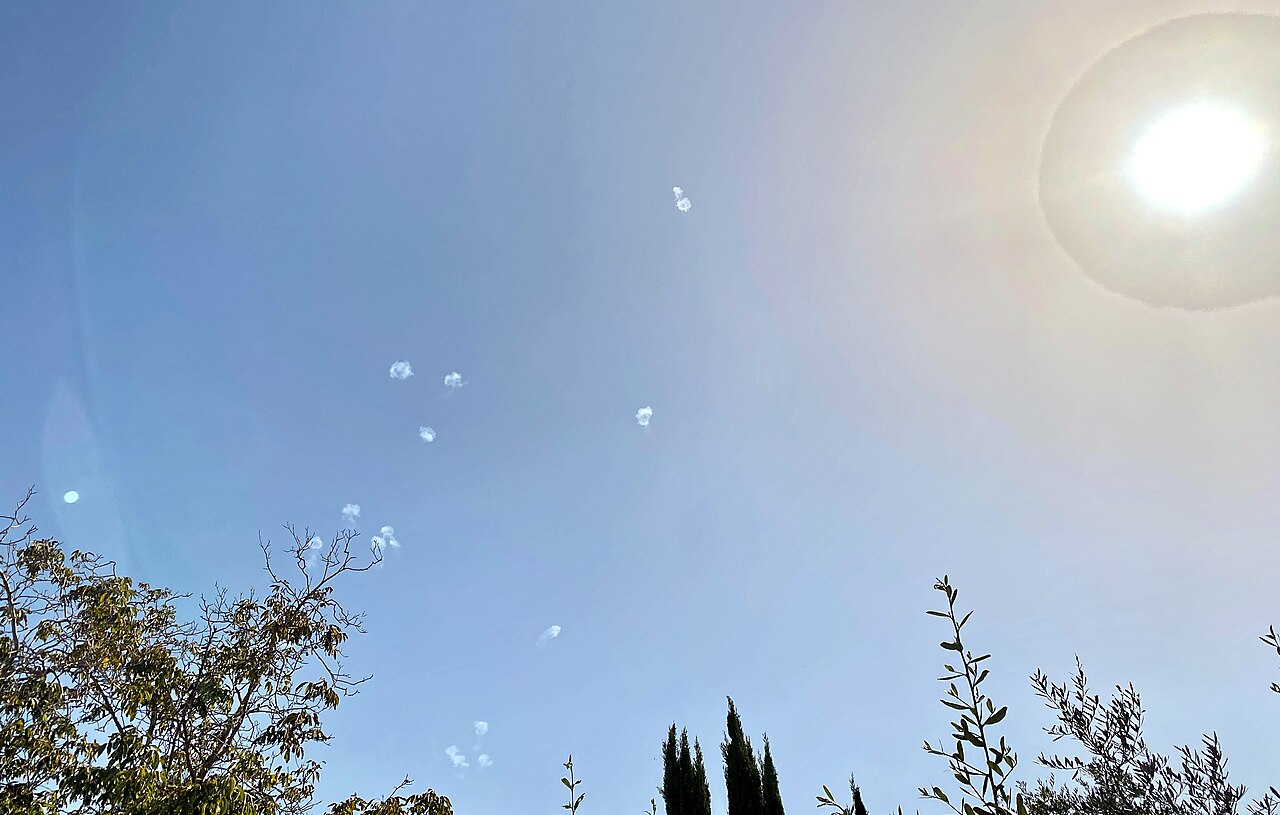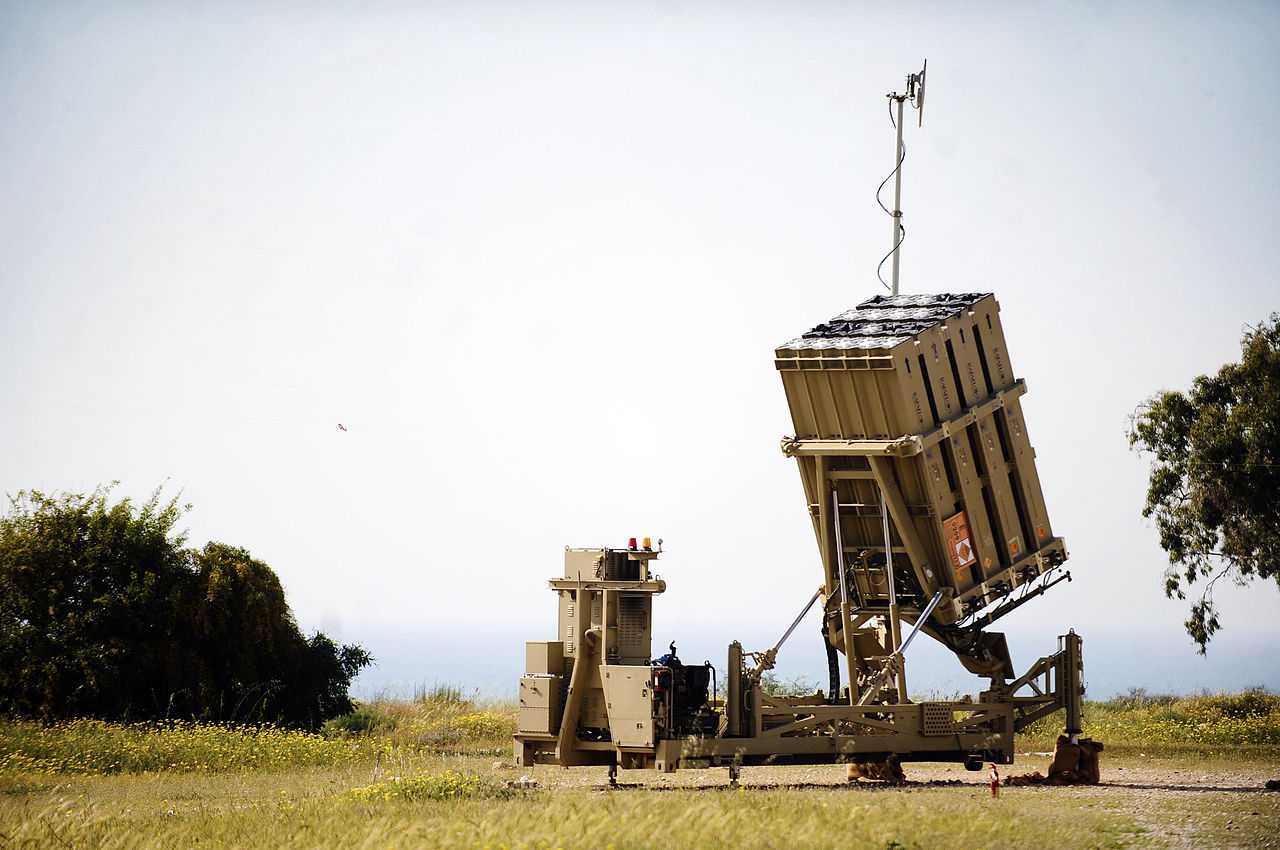
The Israel-Hamas conflict has evolved over the years into one of the most dynamic and complex theaters of modern warfare, with a significant focus on missile and rocket attacks. Over the past decades, the threat posed by missile and rocket fire from Gaza-based militant groups like Hamas and the Palestinian Islamic Jihad (PIJ) has grown, prompting Israel to invest heavily in missile defense technologies to protect its civilians and infrastructure. The rapid advancements in missile interception systems, notably Israel's Iron Dome, have played a crucial role in limiting the impact of these attacks.
This article explores how missile interception works in the Israel-Hamas war by examining the technologies, strategies, and effectiveness of missile defense systems in Israel, the challenges involved, and the ongoing evolution of these defense mechanisms in response to emerging threats.
1. The Growing Threat: Hamas' Rocket and Missile Capabilities
Hamas, which controls the Gaza Strip, has long used rocket and missile attacks against Israel as part of its asymmetric warfare strategy. The rockets fired by Hamas range from simple, short-range projectiles to more sophisticated missiles capable of targeting cities and military infrastructure deep within Israeli territory.
a) The Evolution of Hamas' Arsenal
Hamas' early rocket attacks primarily consisted of Qassam rockets, small and rudimentary projectiles with relatively short ranges. These rockets were often inaccurate, with unpredictable trajectories and limited payloads. Over time, however, Hamas' missile capabilities have improved significantly, partly due to smuggling operations and external support, including from Iran, which has supplied more advanced weapons.
Among the significant upgrades in Hamas' arsenal are:
Grad Rockets: These are Soviet-era rockets with a longer range than the Qassams, capable of reaching Israeli cities in the south.
Fajr-5 Rockets: Manufactured by Iran, these are larger and more accurate, capable of reaching Tel Aviv and other central Israeli cities.
M-75 Missiles: An Iranian-supplied missile, an upgrade from the Fajr-5, with a range that allows Hamas to target even farther-reaching areas in Israel.
Hamas has also made advancements in improving the accuracy and effectiveness of its weapons through modifications to warheads and propulsion systems. With such improvements, Hamas poses a growing challenge to Israel's defense infrastructure, as the number of rocket attacks and the variety of missiles have increased significantly in recent years.
2. Israel's Multi-Layered Missile Defense Strategy
In response to the growing missile threat from Hamas, Israel has developed a sophisticated, multi-layered missile defense strategy, incorporating various defense systems designed to intercept rockets, artillery shells, and missiles across different ranges. These systems include the Iron Dome, David's Sling, Arrow, and other emerging technologies.
a) The Iron Dome: A Game-Changer in Short-Range Missile Defense
The Iron Dome is the most well-known and widely used missile defense system in Israel, primarily designed to intercept short-range rockets and artillery shells fired at civilian targets. Developed by Rafael Advanced Defense Systems in collaboration with the Israeli Ministry of Defense, the system became operational in 2011 and has since been crucial in defending Israel against the onslaught of Hamas' rocket attacks.

The Iron Dome works as follows:
Detection and Tracking: The Iron Dome employs a radar system (developed by ELTA Systems) that continuously scans the sky for incoming threats. This radar is capable of tracking the trajectory of missiles and determining their projected impact points in real-time. If the system predicts that a rocket or artillery shell will land in a populated area, it automatically calculates the optimal interception point.
Intercepting the Threat: Once a potential threat is identified, the Battle Management and Control (BMC) system makes the decision to launch an interceptor missile. The interceptor, known as the Tamir missile, is a small but highly accurate projectile equipped with a proximity fuse that detonates the incoming rocket or artillery shell at a safe distance, preventing it from reaching its target.
Interceptor Launch: The Iron Dome can launch multiple interceptors simultaneously to target multiple incoming projectiles, ensuring that all significant threats are neutralized. Each interception consumes a Tamir missile, which is a relatively expensive component at around $50,000 per missile, but the system's cost-effectiveness is derived from its success in preventing damage to infrastructure and loss of life.
The Iron Dome's effectiveness is widely regarded as one of the key reasons why Israel has been able to defend its civilian population against the large volume of rocket attacks launched by Hamas. With a reported interception rate of around 90%, the system has intercepted thousands of rockets since its inception, saving countless lives.
However, the Iron Dome faces certain limitations. It is optimized for short-range threats and is not designed to intercept long-range missiles, which are a growing concern for Israel as Hamas improves its arsenal. Additionally, its high operational costs and resource-intensive nature mean that it may struggle to cope with prolonged or very high-volume attacks.
b) David's Sling: Addressing Medium-Range Threats
The David's Sling system was developed to address the need for a defense against medium-range missiles, typically those that fall outside the operational range of the Iron Dome. These missiles, which might have a range of up to 300 kilometers, could come from other adversaries such as Hezbollah or from more advanced Hamas weapons.
David's Sling uses the Stunner interceptor, a multi-purpose missile designed to target ballistic missiles and cruise missiles. The system was developed as part of a joint venture between Israel and the United States (Raytheon), and it is integrated into Israel's broader missile defense network.
David's Sling is capable of intercepting more advanced missile threats, such as those launched by Hezbollah from Lebanon or other sources. By providing a layer of defense between the Iron Dome and the Arrow system, it helps protect against a wider variety of threats and serves as a crucial component in Israel's missile defense strategy.
c) The Arrow System: Defending Against Long-Range Ballistic Missiles
For long-range missile threats, particularly ballistic missiles, Israel relies on the Arrow system, which is designed to intercept missiles at much higher altitudes and longer ranges than the Iron Dome or David's Sling. The Arrow system includes multiple versions, with Arrow 2 and Arrow 3 being the most advanced.
The Arrow 3, in particular, is designed to intercept intercontinental ballistic missiles (ICBMs) and has the capability to destroy missiles while they are still outside the Earth's atmosphere, using high-speed interceptors that are launched from the ground or from air platforms.
Israel's reliance on the Arrow system is particularly relevant due to the threats posed by nations like Iran, which is actively developing long-range missile capabilities. While Arrow is not directly used to intercept the short-range rockets fired by Hamas, its development is an essential part of Israel's broader defense against missile threats, contributing to a multi-layered approach to intercept a wide spectrum of threats.
d) Other Defense Technologies
In addition to the Iron Dome, David's Sling, and Arrow systems, Israel is also investing in other technologies and strategies to bolster its missile defense capabilities:
C-MUSIC: The Commercial Multi-Spectral Infrared Countermeasure (C-MUSIC) is a laser-based defense system capable of shooting down small UAVs, drones, and other airborne threats. As Hamas increasingly uses drones in its operations, C-MUSIC offers a potential countermeasure, using directed energy to destroy aerial threats in real time.
Cyber Defense: Israel's cyber defense capabilities play a key role in mitigating missile threats. Through cyber warfare, Israel can potentially disrupt Hamas's missile launch capabilities, communication networks, and weapons systems.
Underground Tunnel Detection: Another innovative approach is Israel's development of anti-tunnel technologies, which are crucial for detecting and destroying tunnels used by Hamas to smuggle weapons and launch surprise attacks. These tunnels often serve as launch points for rockets and missiles and are an increasingly important part of Hamas's military strategy.
3. The Challenges of Missile Defense
Despite the success of Israel's missile defense systems, several challenges persist. These include the increasing sophistication of Hamas' missile technology, the sheer volume of missile attacks, the high operational costs of interception systems, and the limitations of existing systems against emerging threats.
a) The Rising Sophistication of Hamas' Weapons
As Hamas continues to acquire and develop more advanced weapons, Israel's missile defense systems must adapt to counter increasingly sophisticated threats. The integration of more advanced technologies such as GPS guidance and the development of long-range missiles has raised the stakes, making it more challenging for interception systems to maintain high success rates.
Moreover, Hamas has employed tactics that aim to overwhelm Israel's defense systems by launching large numbers of rockets in rapid succession. While the Iron Dome can handle multiple threats simultaneously, the possibility of saturation - where a massive number of projectiles are launched at once - remains a challenge.
b) Cost and Sustainability
Another significant challenge is the cost of missile interception. The Iron Dome, in particular, has high operational costs, with each interceptor costing approximately $50,000. In scenarios where hundreds or even thousands of rockets are launched in a short period, these costs can become prohibitive. While Israel's defense budget is substantial, there are concerns about the long-term sustainability of this approach, particularly during protracted conflicts.
c) Limited Range and Coverage
While the Iron Dome is highly effective against short-range rockets, it is less capable against missiles launched from longer distances, particularly those targeting critical infrastructure or military assets. For these threats, Israel relies on systems like David's Sling and Arrow, but they are not always available in the required quantities to handle large-scale attacks.
4. The Future of Missile Defense in the Israel-Hamas Conflict
The future of missile defense in Israel will likely involve continued technological advancements and the development of new systems capable of addressing emerging threats. Some of the areas where Israel is investing heavily include:
Directed-Energy Weapons: Israel is developing more advanced laser-based systems for missile interception. The potential for these directed-energy weapons to be more cost-effective and efficient in neutralizing threats could dramatically change the calculus of missile defense.
Artificial Intelligence (AI): Integrating AI into Israel's missile defense systems could improve target identification, decision-making, and response times. AI could also play a role in predictive analytics, enabling Israel to preemptively neutralize threats before they can materialize.
Greater Integration: As missile threats grow more diverse and complex, Israel's defense systems will continue to become more integrated. Multi-layered defense strategies that allow for seamless coordination between the Iron Dome, David's Sling, Arrow, and emerging technologies will ensure that Israel can respond to a wide range of threats in real-time.
Conclusion
Missile interception has become a central pillar of Israel's defense strategy in the ongoing conflict with Hamas. Through the development of the Iron Dome, David's Sling, Arrow, and other defense technologies, Israel has built an impressive array of systems capable of intercepting rockets and missiles across various ranges. While these systems have proven highly effective in protecting Israel's civilian population, challenges persist, particularly in dealing with the evolving sophistication of Hamas' missile technology and the operational costs of maintaining such a comprehensive defense network.
As missile threats continue to evolve, Israel will need to continue investing in new technologies and strategies to maintain its edge in missile defense. Ultimately, the combination of existing systems, future innovations, and strategic adaptations will play a crucial role in determining the future of missile defense in the Israel-Hamas conflict and in broader regional security considerations.
Missile Interception Video
You can learn these concepts and more at Dr Hock's maths and physics tuition.